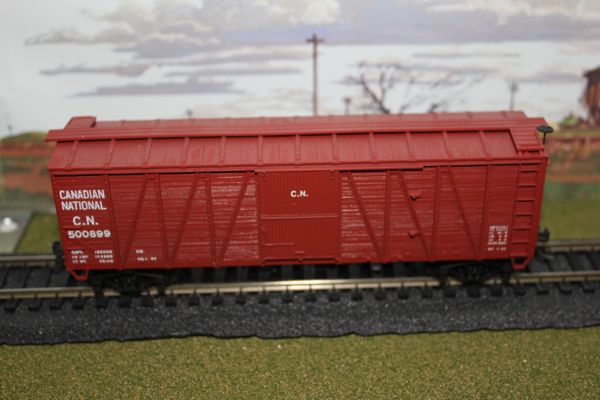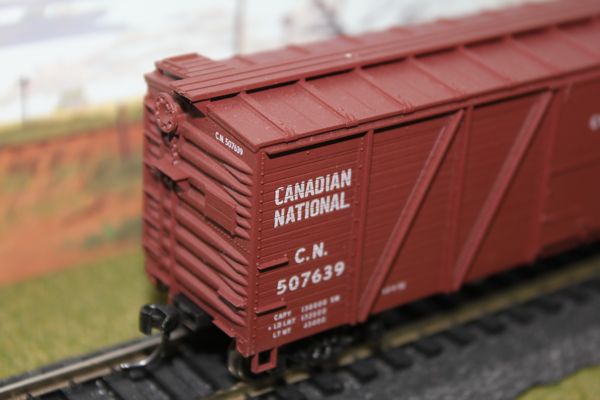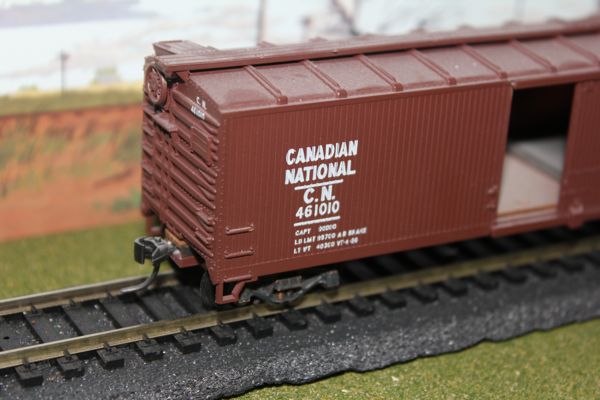Thursday, December 22, 2011 Lethbridge
5:00 am
The temperature is -4° C, with a high predicted of +1° C. From the Environment Canada website: Today Mainly sunny. Wind west 20 km/h gusting to 40 increasing to 40 gusting to 60 this morning. High plus 1. Tonight Clear. Wind west 40 km/h gusting to 60. Low minus 4. Normals Max: -1°C Min: -13°
5:10 am Model Trains
Early morning - a good time for some serious reading about early boxcars on the CNR.
As near as I can tell there are about 9 different types of boxcars that were found on the CNR. The following information was obtained from a website ( http://www.canadianbranchline.com/cnr1.htm ) as well as the Canadian Rail Car Pictorial (vols. 2, 2A, 4, 4A).
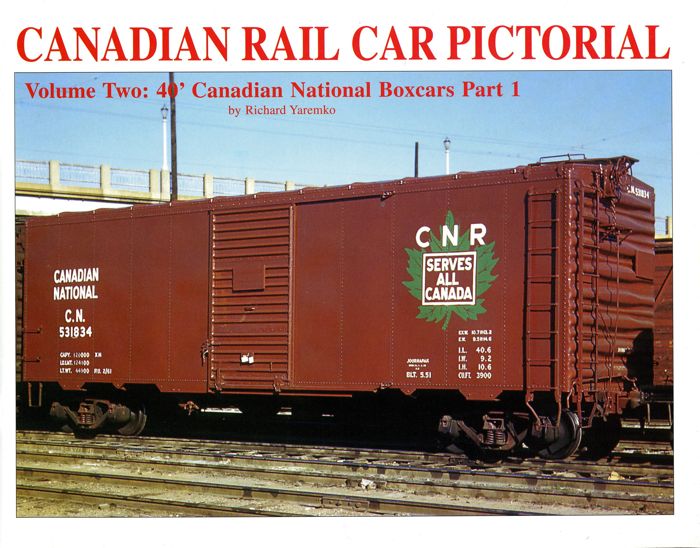

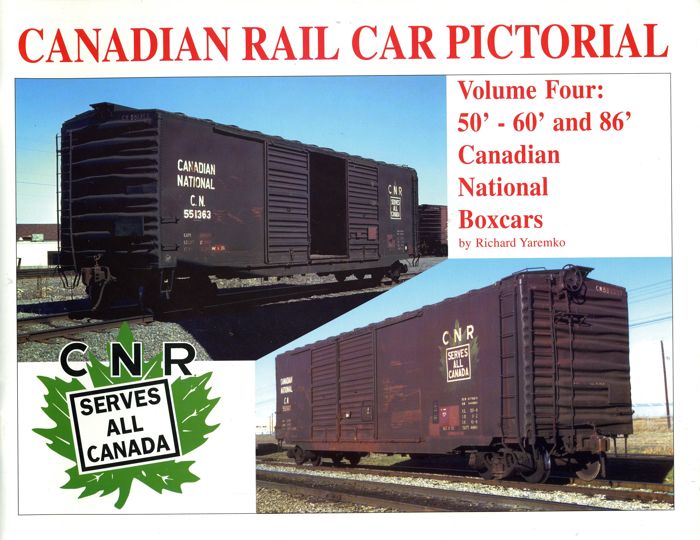
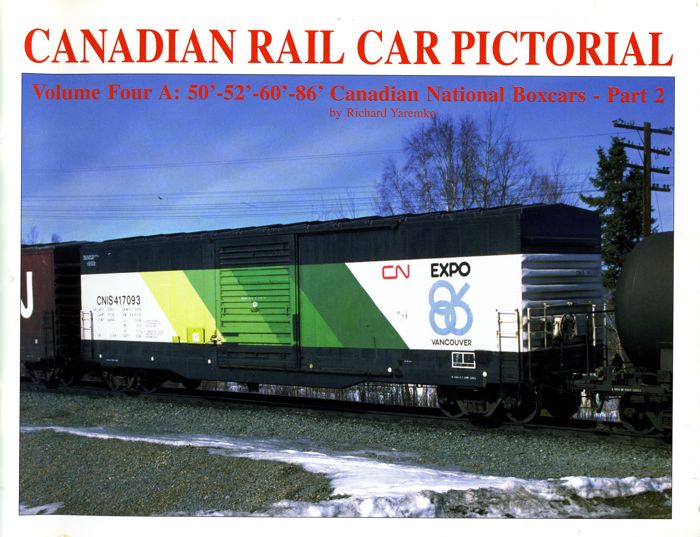
As a result of considerable web browsing I have come to appreciate that there is no standard agreement on the types of boxcars that have been produced. In some cases this even applies to a particular car that may have begun as a Fowler and then was converted to a stock car or to a seven-panel steel frame car. Nonetheless the general idea behind the categories used in the above books is a reasonable way to proceed.
1. 36' steel frame
- wooden sides
- series 404000 - 405999
- inherited from predecessor railroads
- 36', Z braced steel frame,
- 1909 'Fowler Patent'
- single sheathed
- 5' door
2. 40' steel frame
- wooden sides
- series 461000 - 463999
- series 500500 - 503499
- series 503500 - 513152
- 40' Z-braced steel frame
- 7 panel and 9 panel frames
- USRA fish belly underframe
- primarily single sheathed
- 6' door
- HO model: Accurail - CN 500899, Hutchins roof, wood end
- HO model: Accurail - CN 507639, Hutchins roof, 4/4 Dreadnaught end
- HO model: Walthers - CN 461010, double-sheathed steel frame, dreadnaught end, Hutchins roof
In addition to the basic structural differences of the above "types", there were 5 different roof styles and 5 different end styles.
Roof styles:
- Hutchins All-steel Dry Lading
- Murphy Raised Panel
- Murphy Diagonal Panel
- Pullman PS-1
- National Steel Car
End styles:
- National Steel Car (NSC-1)
- National Steel Car (NSC-2)
- National Steel Car (NSC-3)
- Dreadnaught
- Improved Dreadnaught
3. 40' Steel
4. 40' Insulated
5. 40' Double-door
6. 50' Insulated
7. 50' Single-door
8. 50' Double-door
Here is a website that gives some useful information on the wooden boxcars:
(I have copied this information in case the link disappears).
The Development of the Outside Braced Single Sheathed Box Car

The outside braced single sheathed box car proved to be a significant development in railway freight car technology in Canada. Thousands of them saw use on Canada's railways beginning in 1909 through until about 1964. They carried bulk products such as grain and coal. They also carried packaged or bagged lading referred to as clean lading. While most of the outside braced cars were built for general service, some were built specifically to carry machinery and automobiles. For forty years freight trains on the prairies and indeed all across the country consisted of long lines of outside braced boxcars. They could commonly be found at elevators and loading platforms in communities small and large. They dominated railway yard scenes well into the 1940s.
The use of steel for the under frame (center and side sills), side and end frames initiated a new form of railway freight car building technology. Steel center sills and other under sill framing gave the cars the strength necessary to withstand the stress of longer and faster trains as well as the considerable stress involved in the contact necessary to activate closure of the knuckle coupler while being made up into trains in rail yards or from being picked up from local sidings along the line. The steel frame and the single wood side sheath minimized the weight of the car. This type of car design led to easy construction and repair. Its initial construction cost was low. The design provided secure joints between sides, ends and floors which prevented grain leakage.
The cars were first developed by the Dominion Car and Foundry Company Ltd. of Montreal in collaboration with the Canadian Pacific Railway in 1908. Three experimental cars were produced. One was a double sheathed car with the framing sandwiched between the wood sheaths. The second was built with "L" shaped steel exterior framing with the single wood sheath inside the framing. The third car similar to the second featured "Z" shaped steel framing and proved to be the prototype for over 33,000 similar cars with standard inside length of 36 feet and capacity of 80,000 lbs (40 tons) completed for the C.P.R. between 1909 and 1915. While the three experimental cars were stenciled as being designed and built by the Dominion Car and Foundry Company Ltd. of Montreal the patent for the new development was apparently held by WE. Fowler, Master Car Builder for the Canadian Pacific Railway. Production began in late 1908 at the Dominion plant with an order for 500 cars. Dominion built the car frames and bolsters, set them on trucks, applied the brake rigging, and had them transported to the C.P.R. Angus shops where they were finished with the application of the wood floor, side sheathing, roof and hand brake apparatus. In 1909 the Dominion Car and Foundry was folded into the newly formed Canadian Car and Foundry Company which along with other builders continued to produce these cars. A corporate history of the Dominion Car and Foundry Co. and the Canadian Car and Foundry Company appears in a paper titled "Railway Rolling Stock Industry In Canada" by Andrew Merrilees. The name "Dominion" as applied to these cars is not official nor is the name "Fowler Patent". This nomenclature has been created by contemporary researchers based on the information given above. The Official Railway Equipment Register and Canadian Pacific Railway’s Summary of Equipment booklets simply refer to these cars as box cars, steel frame. Contemporary researchers have also divided these C.P.R. 36 foot box cars into three phases to differentiate small improvements made to the design which resulted in reduced tare. As built, the cars featured two small end doors in the center of the "B" end of the car. The "B" end can be identified as the end with the brake wheel. The upper end door called a lumber door facilitated the loading and unloading of long lumber stock while the lower end door called a rail door accommodated the loading and unloading of steel rails. These doors had disappeared by the early 1920s as this type of lading could be more easily handled in strengthened gondola and flat cars.
Two groups of special service cars deviated slightly from the standard production model of these cars. Three hundred cars built as "automobile" or "machinery" cars featured wider side doors and a pair of full height end doors at one end, Two hundred cars assigned to special grain service between Port McNicoll, Ontario and West St. John, New Brunswick featured drop doors for ease of unloading at special facilities available at West St. John.
In the early 1920s Canadian Pacific began taking delivery of 40-foot cars based on the same steel frame design as the proven technology of the 36-foot car.
Beginning in 1919 Canadian Pacific began to convert some of thc steel frame box cars to stock car service. This simply involved the removal of alternate boards on each side and the fitting of specialty constructed stock car service side doors. In the early 1930s some of the steel frame box cars and stock cars were fitted with more modern trucks and AB hand brakes. Many however remained in service with their arch bar trucks and K type hand brakes well into the 1950s. By that time such cars would be restricted to domestic service only, assigned to the service car roster, sold to other railways or scrapped.
Other Canadian railways extensively used the steel frame box car. Railway and Marine World of August 1911 reported that the Intercolonial Railway had placed an order for this type of car. These cars were rated for 30-ton capacity compared with the 40-ton capacity of the C.P.R. cars. Both the Grand Trunk (1913) and the Canadian Northern (1918) took delivery of 40-ton capacity cars. Some 40-ton capacity cars were delivered to and lettered for Canadian Government Railways in 1918. The successor to these roads Canadian National Railways continued to place orders for the steel frame box car. In 1916 the Canadian Government Railway ordered larger 40-foot box cars which were also higher and had an increased tonnage capacity of 50 tons. These longer cars are easily identified with their nine side panels compared to the smaller seven side panel cars.
The Canadian National Railways and its predecessor roads ordered a total of 34,722 steel frame box cars. By 1915 the Canadian Pacific Railway had 33,428 of these cars in its fleet and added more in the 1920s. The latter cars were the larger 40 foot cars.
The Alberta Railway Museum has in its collection several steel frame box cars. It would appear that the museum holds the only known steel frame box car from the early Canadian Pacific group with its arch bar trucks and K type hand brake system: namely, ex Northern Alberta Railways 17913. Its lineage is outlined in the article from The Marker Volume 14, No. 154, March 1988. That lineage is determined from the tables accompanying Paul Clegg's article from Mainline Modeller.
Little is written in Railway and Marine World about the development of the steel frame box car. John H. White's The American Railroad Freight Car available at the University of Alberta library lacks information about this development as well. The authors of the articles in Mainline Modeller say little about their sources but their information appears to come from technical papers published in engineering journals. The research published by Paul Clegg and Stafford Swain in the Mainline Modeller articles provides us with a rich source of historical information about the development of the steel frame box car.
References:
Canadian Pacific Railway Company, Summary of Equipment, Compiled and Issued by the Office of Chief of Motive Power and Roiling Stock, M.P. 14, Issued January 1,1950.
Canadian Railway and Marine World, Acton Burrows Ltd., 70 Bond Street, Toronto, Ont.
Clegg, Paul, The Dominion Box Car: Part One, The Canadian Pacific Cars, Mainline Modeller, Hundman Publishing, 5115 Monticello Drive, Edmonds, Washington, USA. 98020, Volume 6, Number 6, June 1985.
Clegg, Paul, The Dominion Box Car: Part Two, The Canadian Pacific Stock Car, Mainline Modeller, Hundman Publishing, 5115 Monticello Drive, Edmonds, Washington, U.S.A. 98020, Volume 6, Number 7, July 1985.
Hatcher, Cohn, The APRA. Collection: Outside Braced Box Cars, The Marker, The Alberta Pioneer Railway Association, Volume 14, No. 154, March 1988.
Merrilees, Andrew, Railway Rolling Stock Industry in Canada, unpublished paper on the Internet at infoweb.magi.com. May 28, 1963.
Official Railway Equipment Register of the United States, Canadian and Mexican Railroads, The Railway Equipment and Publication Company, 75 Church Street, New York, N.Y., U.S.A. Vol. XXVIII, No.6, November 1912.
Official Railway Equipment Register of the United States, Canadian and Mexican Railroads, The Railway Equipment and Publication Company, 424 West 33rd Street, New York, N.Y.. U.S.A. Vol. XL, No. I, June 1924.
Railway and Marine World, Acton Burrows Ltd., 70 Bond Street, Toronto, Ont., August 1911.
Swain, Stafford, Canadian National Box Car, Dominion Car on the CN, Mainline Modeller, Hundman Publishing, 5115 Monticello Drive, Edmonds, Washington, U.S.A. 98020, Volume 6, Number It, November 1985.
White, John H., The American Railroad Freight Car, John Hopkins University Press, Baltimore, MD., U.S.A. 1993.
There is a lot of information on the Web about how to model these cars. Here is one of the best:
The following is a new feature that I am testing.
HTML Comment Box is loading comments...
